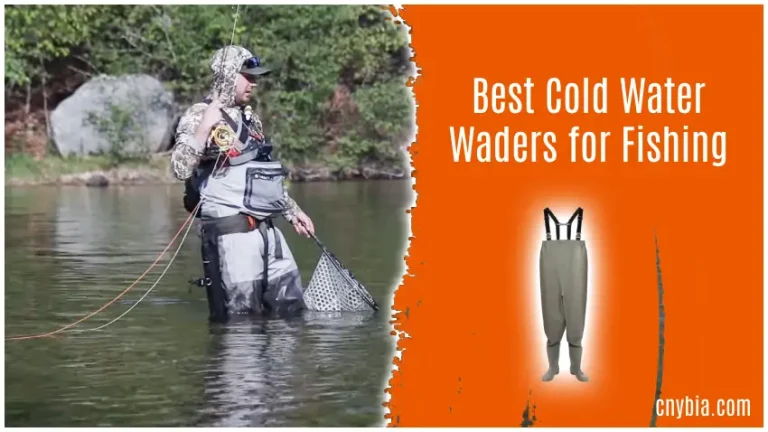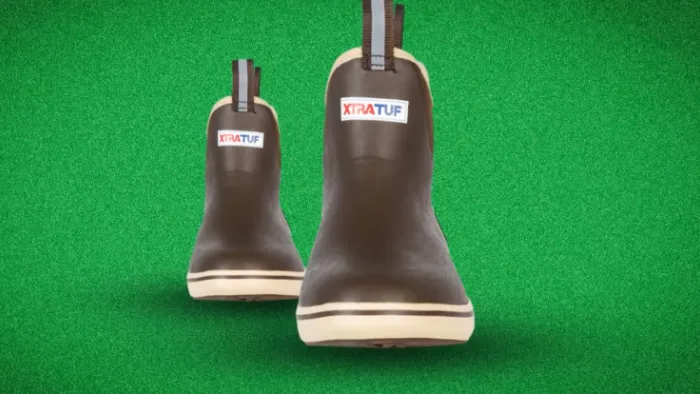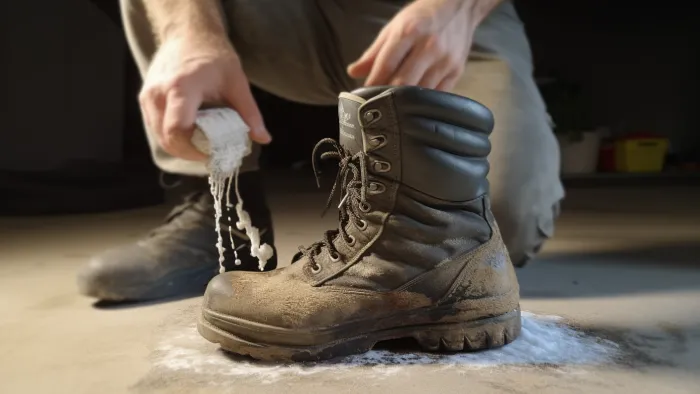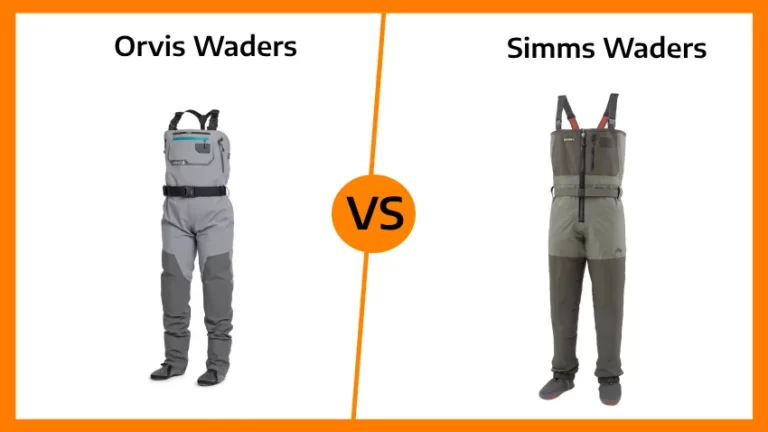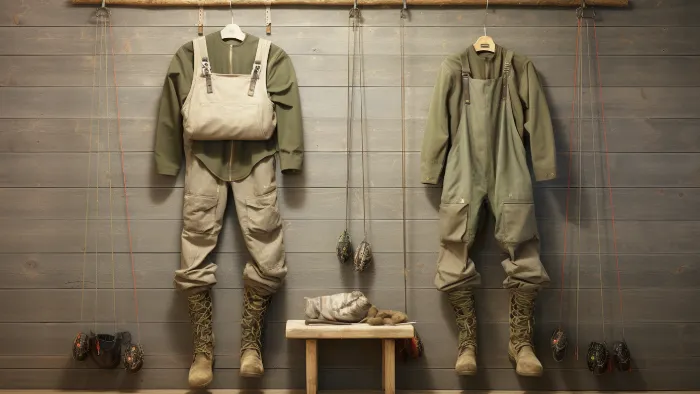Fishing Wading Pants vs Chest Waders: Seven Differences to Consider
Have you ever waded in a lake or river and found yourself in need of protection from the cold water? If so, you may be debating between wading pants and chest waders. Even though they are both created with the same purpose, they differ in many ways.
Wading pants offer less protection than chest waders and are better suited for shallower waters. While chest waders provide full protection up to the chest and are better for rougher waters and deep rivers.
Also, wading pants are made with neoprene and provide comfort, and breathability, whereas chest waders can be made from neoprene, nylon, or GORE-TEX.
Today we’ll explore the differences between chest waders and wading pants, what size to get, and whether they are worth it. So keep reading for further information.
The Differences Between Wading Pants and Chest Waders
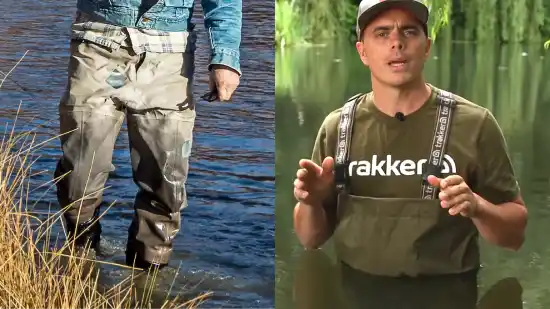
You may wonder what the difference is between wading pants and chest waders. Both types of waders protect wet and cold environments, but there are some key differences that you should consider when deciding which type of wader is right for you.
- Length and level of protection
- Water depth accessibility
- Construction material
- Comfort and mobility
- Temperature & weather conditions
- Ease of use
- Fitting capabilities
Length and Level of Protection
With chest waders, you’re fully protected up to the chest, while wading pants only cover you from the waist down.
Chest waders provide more coverage, making them better for rougher waters and deep rivers. Wading pants, conversely, are better for shallower waters as they don’t reach as high up and therefore don’t provide the same level of protection.
The length of the waders is an important factor to consider when deciding which type to buy. Chest waders are much longer and provide more protection, whereas wading pants are shorter and provide less coverage. They both offer protection from the elements, but chest waders offer more.
Water Depth Accessibility
Ready to take a plunge? Make sure you choose the right garment for the water depth. No one wants to be embarrassed by having too much coverage or not enough.
Wading pants are designed to protect you from water up to the waist, while chest waders protect larger bodies of water that may reach above the waist.
| Water Depth | Wading Pants | Chest Waders |
| Shallow | Suitable | Too much coverage |
| Waist-level | Suitable | Suitable |
| Above Waist | Too little coverage | Suitable |
Construction Material
Regarding construction, neoprene and GORE-TEX are the materials for keeping you comfortable and dry. Wading pants are typically made with neoprene, offering good insulation and waterproofing. It’s also lightweight and flexible, making it easy to move around.
Chest waders, on the other hand, can be made from nylon, neoprene, or GORE-TEX. GORE-TEX is more durable than neoprene, offering superior breathability and waterproofing. Nylon is often used for the upper portion of the chest waders, providing extra flexibility and strength.
Comfort and Mobility
Wading pants made of neoprene are your best option if you’re looking for maximum comfort and mobility while fishing or hiking. Neoprene is a synthetic rubber type, making it extremely lightweight and flexible, allowing you to move freely without feeling restricted.
Also, they are highly breathable, helping to keep you cool even in warmer climates. The material is also highly durable and won’t tear easily, so you don’t have to worry about them wearing out.
Chest waders, on the other hand, are better suited for cold weather and deeper water. They’re made of heavier material, providing more protection and support but can be restrictive and make it harder to move around.
Temperature & Weather Conditions
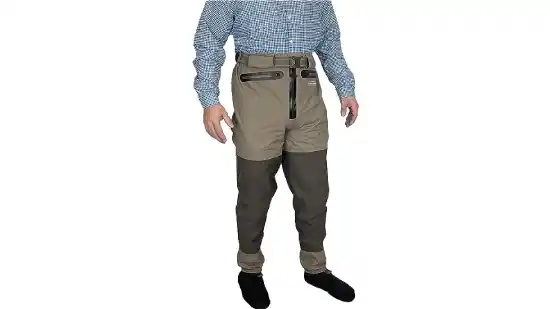
Moving on from comfort and mobility, let’s look at temperature. Wading pants are the cooler choice and best for warmer weather and shallower waters.
Conversely, chest waders keep you warm and are more suited for colder weather and deeper waters. Both wading pants and chest waders provide protection and comfort depending on the weather and water conditions.
Regarding weather conditions, wading pants and chest waders have different ‘strengths and weaknesses’. Wading pants are best for warmer weather and shallower waters, providing more comfort and a cooler feel. Chest waders, on the other hand, offer more protection in cold weather and deeper waters.
| Wading Pants | Chest Waders | |
| Temperature | Warmer | Colder |
| Water Depth | Shallower | Deeper |
| Comfort | High | Medium |
Ease of Use
Wading pants allow for a non-restrictive range of motion, making them easy to put on and take off. They are also light and comfortable, ideal for anglers who want to move around quickly and easily.
In contrast, chest waders require more effort to put on, but they also provide more coverage and protection from the elements. Chest waders can also be rolled down for a more comfortable fit in warmer weather.
Fitting Capabilities
No matter your size or shape, you can find the perfect fit with either type of apparel. Wading pants are designed with an elasticated waist or belt, providing a snug and comfortable fit. Conversely, chest waders offer a secure fit using bungee-style straps and braces.
Both types of apparel are designed to be adjustable and flexible, allowing for a custom fit to suit any body shape. The straps and elastic can be adjusted quickly and easily, so you can be sure your wading gear will stay in place no matter how active you are.
Comparison Table Between Wading Pants vs Chest Waders
| Aspect | Wading Pants | Chest Waders |
| Coverage | From waist down | Up to the chest |
| Suitable Water Depth | Shallower waters | Rougher waters and deep rivers |
| Construction Material | Neoprene | Neoprene, GORE-TEX, or Nylon |
| Comfort and Mobility | Lightweight, flexible, highly breathable | Heavier, restrictive, suitable for colder weather |
| Temperature Suitability | Warmer weather | Colder weather |
| Ease of Use | Non-restrictive, easy to put on and take off | Require more effort to put on, can be rolled down for comfort |
| Fitting Capabilities | Elasticated waist or belt for a snug fit | Bungee-style straps and braces for a secure fit |
What size chest wader do I need?
To determine the right size chest waders, measure your chest at the widest point and your inseam from the crotch to the hem of your pants for accurate sizing. Compare your measurements to the size charts provided by a wader manufacturer to find the best fit for you.
When choosing the correct size, you should aim for a snug fit that isn’t too tight or too loose. Your waders should be slightly larger than your body to allow for comfortable movement.
Also, check the manufacturer’s guidelines regarding height and weight to ensure the waders will fit your body properly. It’s also important to consider the weather conditions when selecting your size, as some materials expand in heat and contract in cold.
Are wading pants waterproof?
Wading pants are made with durable full four-layer fabric construction, including legs, knees and seat, providing you with superior waterproof protection. Thanks to high-grade breathable four-layer DWR fabric technology, you can trust that your wading gear is completely waterproof.
The DWR coating on the fabric helps repel water from the surface and keeps you dry and comfortable all day.
| Layer | Fabric | Technology |
| 1 | Breathable | DWR |
| 2 | Polyester | 4-layer |
| 3 | Nylon | Coated |
| 4 | Spandex | Fabric |
Do you wear socks when wet wading?
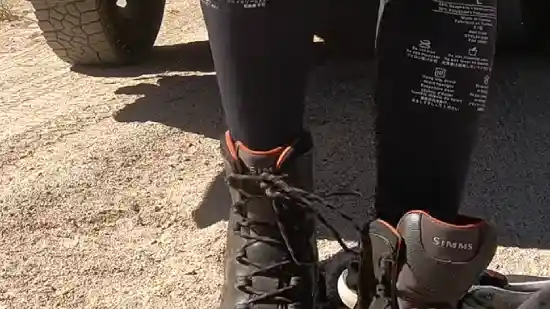
Definitely, wearing socks when wet wading is essential, but how do you choose the right pair? To make sure you’re comfortable and your feet are properly protected, consider these three points:
- Material: Choose a synthetic blend like polypropylene or polyester, which are designed to be lightweight and moisture-wicking for maximum comfort.
- Fit: Make sure the socks fit snugly and securely but not so tight that they’re uncomfortable.
- Height: Select a sock that’s long enough to cover your ankles and the tops of your feet.
Wearing the right pair of socks ensures your feet stay warm and dry. While it’s possible to wet Wade without socks, it’s not recommended as it can lead to chafing and irritation.
What not to wear under chest waders?
When wet wading, it’s important to avoid wearing denim or cotton clothing under your waders. This ensures maximum comfort and protection. Synthetic materials such as polyester, wool, and nylon are better choices.
They are designed to wick moisture away, keeping you dry and comfortable. Pants made of synthetic fabrics are an ideal choice for use under waders. They are lightweight and won’t become heavy when wet.
Also, thin base layers like long underwear or thermals are recommended. Wearing two layers of synthetic materials is often the most comfortable option. Make sure they fit snuggly and aren’t too tight or too loose.
Avoid wearing anything bulky or heavy as it can restrict movement and make it harder for your body to regulate temperature. Lastly, always ensure that your clothing is breathable and fits properly.
Are wading pants worth it?
Investing in a pair of wading trousers is worth it to stay safe and comfortable while exploring the waters. Wading pants are designed to provide more support and protection than chest waders and are usually made from breathable, lightweight materials.
They come in various lengths and styles, allowing you to find the perfect fit for your needs.
| Pros | Cons |
| Lightweight | Limited wading depth |
| Breathable | Less protection |
| Variety of sizes and styles | Higher cost |
Wading pants are a great option for those who don’t want to go too deep but still want to remain safe and comfortable. They are also more affordable than chest waders, making them a great investment.
Is it bad to wear jeans under waders?
It’s strongly advised not to wear jeans under waders, as jeans can trap moisture and make for an unpleasant experience. Denim and cotton are fabrics that absorb and retain moisture, and that can cause a person to become uncomfortably wet and even cold while out in the elements.
Wading pants have an exterior made with synthetic fibers that won’t absorb water, making them ideal for wearing under waders. Synthetic fibers are breathable and allow moisture to escape, keeping you dry and warm.
Chest waders should be worn with a lightweight base layer made with synthetic fibers or wool, but avoid cotton or denim. Wearing the right clothing while wading ensures maximum comfort while outdoors.
Wading Pants or Chest Waders: Select the Proper One According to Your Needs
You’ve discovered the differences between wading pants and chest waders, what size you’ll need, and what not to wear under them. And you may be wondering if wading pants are worth it. The answer is yes.
In fact, wading pants can last up to three times longer than chest waders. So if you want to make the most of your fishing adventures, wading pants are a great investment.
Plus, you don’t have to worry about wearing jeans under them; the material is made to be breathable and waterproof. So don’t delay, get out there and enjoy your day on the water with wading pants.

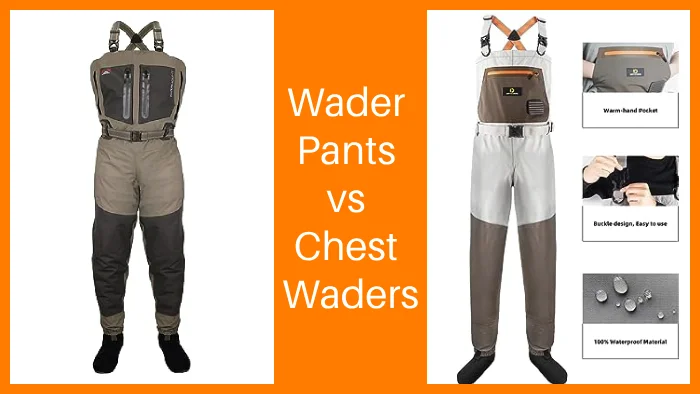
![How to Make Your Own Fishing Waders: 10 Steps [DIY]](https://www.cnybia.com/wp-content/uploads/2023/07/how-to-make-your-own-fishing-waders1-768x432.webp)
